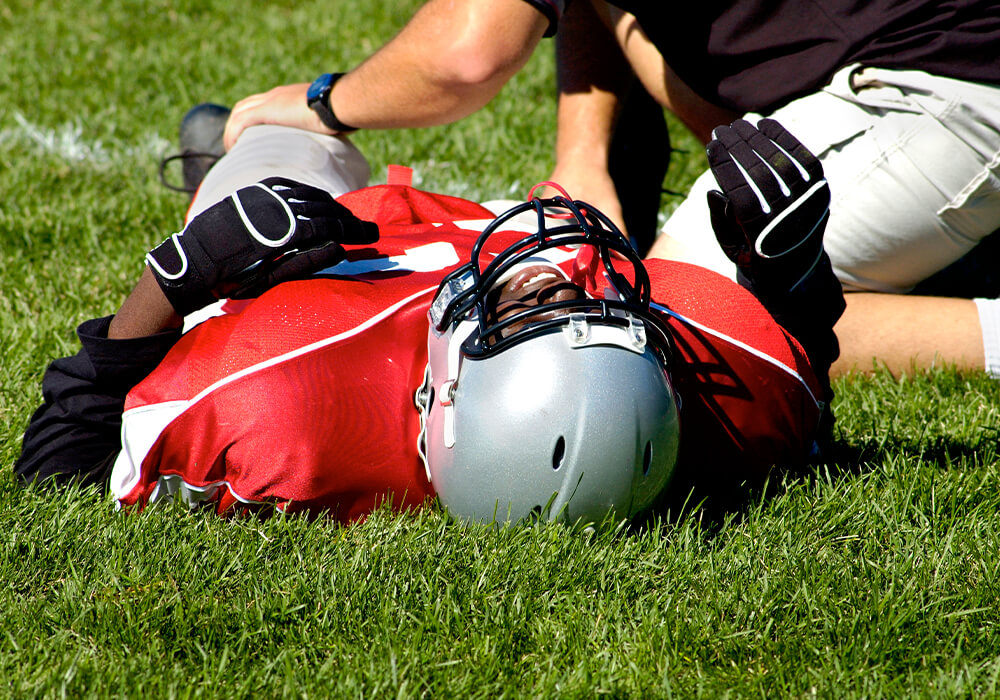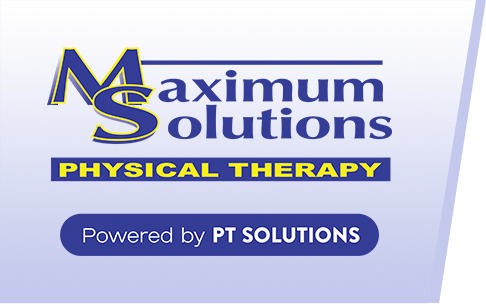Rehabilitation after ACL Injury: Steps to Recovery
Anterior Cruciate Ligament (ACL) injuries are among the most common knee injuries, particularly among athletes. The ACL is crucial for knee stability and control, especially in dynamic movements such as pivoting or jumping. Injuries to the ACL can occur due to sudden stops, changes in direction, or direct contact during sports activities and range from partial tears to complete ruptures.
Maximum Solutions Physical Therapy offers a comprehensive approach to ACL rehabilitation, emphasizing personalized care to facilitate a full and efficient recovery. Let’s take a closer look at ACL injuries and the steps involved in recovering from them, from initial injury management to returning to peak physical activity.

Understanding ACL Injury Treatment Options
Treatment for ACL injuries may involve surgery, typically reconstructing the torn ligament with a graft from another tendon or a donor, followed by extensive rehabilitation to regain knee function. The need for surgery largely depends on the injury’s severity, the patient’s activity level, and their physical activity goals post-recovery. Injuries range from Grade 1 (mild sprain) to Grade 3 (complete tear).
- Severity: Grade 3 injuries often necessitate surgery for full-function recovery, especially in active individuals, while Grades 1 and 2 might be managed without surgery.
- Activity Level: Those engaged in sports requiring significant knee movement may need surgery to return to activities safely.
- Knee Stability: Surgery may be recommended if the knee is unstable after rehabilitation.
- Age and Health: Younger, more active patients typically undergo surgery, though decisions are personalized.
Immediate Care Post-Injury
Immediate action following an ACL injury is crucial for successful recovery. This initial care focuses on the “RICE” protocol:
- Rest: Activity should be minimized to prevent further damage to the knee. It’s important to avoid putting weight on the injured leg until a healthcare professional can assess the severity of the injury.
- Ice: During the first 48 hours, ice packs are applied regularly for 15-20 minutes every two to three hours to help reduce swelling and pain. However, to avoid frostbite, ice should not be applied directly to the skin.
- Compression: To help control swelling, a compression wrap or bandage can be applied to the injured area. It should be snug but not tight enough to cause numbness or tingling.
- Elevation: Elevating the injured leg above the level of the heart aids in decreasing swelling by improving venous return and reducing blood flow to the affected area.
ACL Injury Rehabilitation Phases
Phase 1: Prehabilitation
Before any surgical intervention, “prehab” focuses on preparing the knee for surgery by reducing swelling, restoring range of motion, and maintaining muscle strength. This phase involves:
- Gentle Stretching: To maintain flexibility without straining the injured ACL.
- Strengthening Exercises: These exercises focus on the muscles around the knee, hip, and core to support the knee joint and reduce the load on the ACL during recovery.
Phase 2: Post-Surgery Rehabilitation
Recovery doesn’t end with surgery. Post-surgery rehabilitation at Maximum Solutions Physical Therapy is meticulously phased to support healing and strength rebuilding:
- Early Stage: In the initial weeks post-surgery, concentrate on minimizing swelling, managing pain, and beginning gentle movements to increase the range of motion. Techniques such as isometric exercises involving muscle contractions without moving the joint are vital during this stage.
- Middle Stage: As the knee begins to heal, rehabilitation efforts intensify. Exercises become more challenging, focusing on rebuilding the strength of the knee, hip, and core muscles. Incorporating balance and proprioception exercises helps retrain the knee to stabilize itself during movement.
- Late Stage: The focus shifts to restoring the knee’s full strength, endurance, and flexibility. Sport-specific exercises and agility training are tailored to patients’ needs, preparing them for a safe return to sports and activities.
Phase 3: Return to Activity
The decision to resume sports or physical activities is made carefully considering several factors, including the knee’s restored strength and stability, successful completion of sport-specific drills, and clearance from the therapy team. This phase of rehabilitation typically includes:
- Injury Prevention Guidance: Educating patients on techniques and exercises to prevent future injuries.
- Conditioning Programs: Tailored programs designed to maintain strength, flexibility, and endurance and minimize the risk of re-injury.
Supporting Your Recovery
Recovery from an ACL injury requires patience, dedication, and a positive mindset. Throughout rehabilitation with Maximum Solutions, we offer support, expertise, and encouragement through:
- Personalized Care: Each rehabilitation plan is tailored to the individual’s needs, goals, and progress.
- Education: Patients are educated about their injury, recovery process, and ways to prevent future injuries.
- Communication: Open communication between the therapist, patient, and other healthcare providers ensures coordinated care and optimal recovery.
Tips for Preventing ACL Injuries
Preventing ACL injuries is crucial for athletes and active individuals to maintain long-term knee health and performance. While it’s impossible to eliminate the risk entirely, incorporating specific strategies into your training and daily activities can reduce the likelihood of an ACL injury. At Maximum Solutions Physical Therapy, we emphasize prevention as a key component of care. Here are a few essential preventative tips and strategies:
Strengthening Exercises
- Focus on the Lower Body: Strengthening the muscles around the knees, hips, and core can provide better support for the knee joint. Exercises targeting the quadriceps, hamstrings, glutes, and calves are particularly beneficial.
- Core Stability: A strong core helps maintain proper alignment and balance, reducing undue stress on the knee during physical activities.
Plyometric Training
- Incorporate Jumping and Agility Drills: Exercises that improve power, agility, and neuromuscular control can help the body learn how to absorb and distribute forces during high-impact activities properly.
- Emphasize Proper Landing Techniques: Training to land with knees slightly bent and over the toes can prevent the knee from collapsing inward, a common mechanism of ACL injuries.
Flexibility and Mobility Work
- Regular Stretching: Maintaining flexibility in the muscles around the knee and hip can improve joint mobility and reduce the risk of injuries.
- Dynamic Warm-Ups: Start every workout or sports activity with a dynamic warm-up to prepare the muscles and joints for the demands of physical activity.
Balance Training
- Proprioception Exercises: Exercises that challenge your balance help to improve proprioception, or the body’s ability to perceive its position in space, which is crucial for knee stability.
- Use Balance Equipment: Tools such as wobble boards, balance discs, or Bosu balls can make balance training more effective.
Wear Appropriate Footwear
- Choose the Right Shoes: Footwear that provides adequate support and is appropriate for the specific sport or activity can help maintain proper leg alignment and reduce stress on the knees.
Practice Good Technique
- Sport-Specific Skills: Ensure all movements and techniques are performed correctly, especially during high-risk maneuvers like pivoting and cutting. Consider working with a coach or trainer to refine your technique.
- Mindful Training: Listen to your body and avoid pushing through fatigue. Tired muscles are less effective at protecting the knee from injury.
Gradual Increase in Activity
- Avoid Sudden Changes in Training Intensity: Gradually increase the intensity and duration of workouts to allow the body to adapt and reduce the risk of overuse injuries.
Integrating these preventive strategies into your training regimen and daily activities can reduce the risk of an ACL injury and ensure long-term knee health. Remember, prevention is always better than cure, and taking proactive steps today can safeguard your mobility and performance for the future.
Get Back in the Game!
Recovering from an ACL injury is a comprehensive process requiring dedication and patience. At Maximum Solutions Physical Therapy, we understand the physical and psychological challenges of these injuries. Our goal is to guide each patient through recovery, providing expert care and personalized rehabilitation programs. Together, we’ll work toward a return to activity and achieving your highest potential for strength, mobility, and confidence on and off the field.

